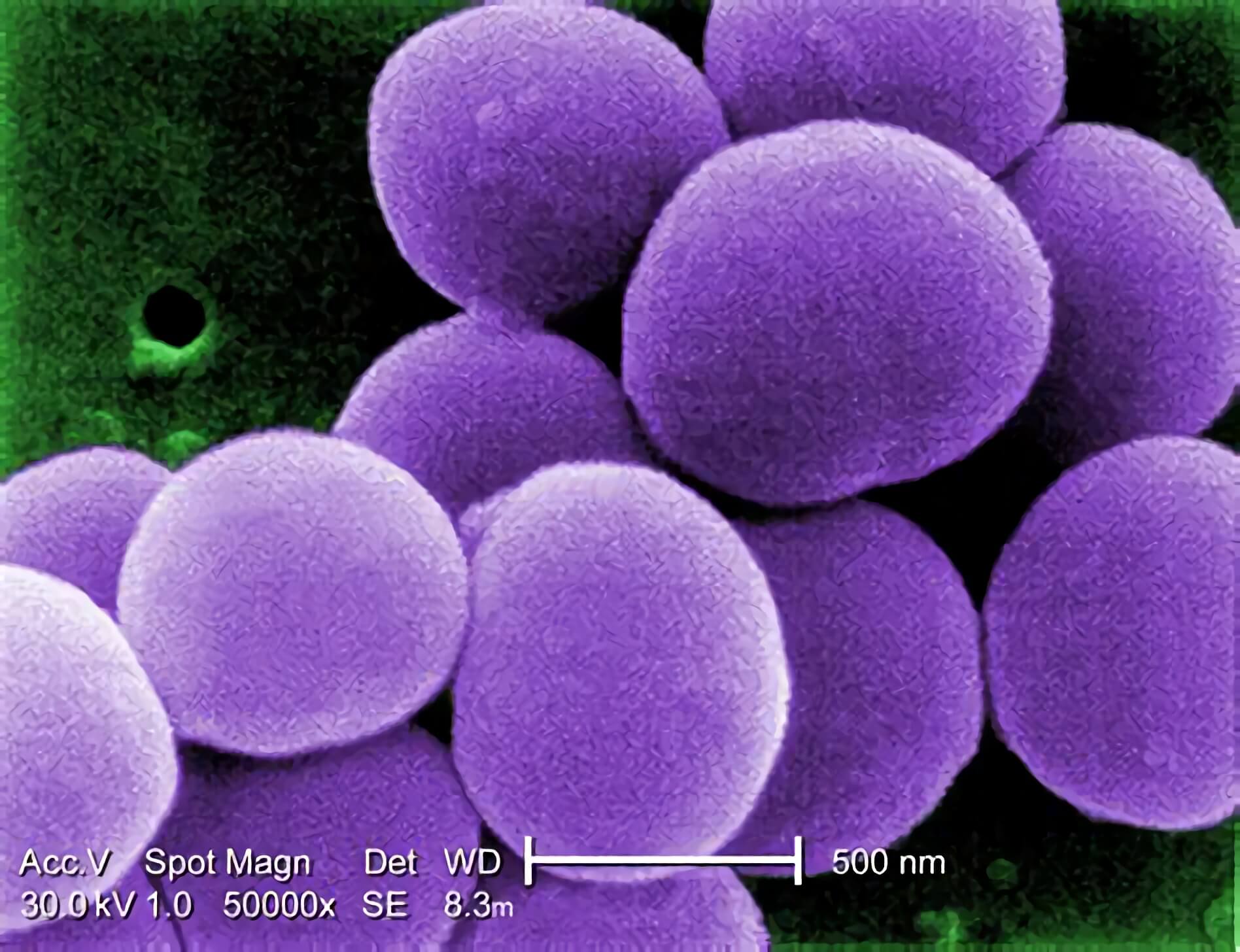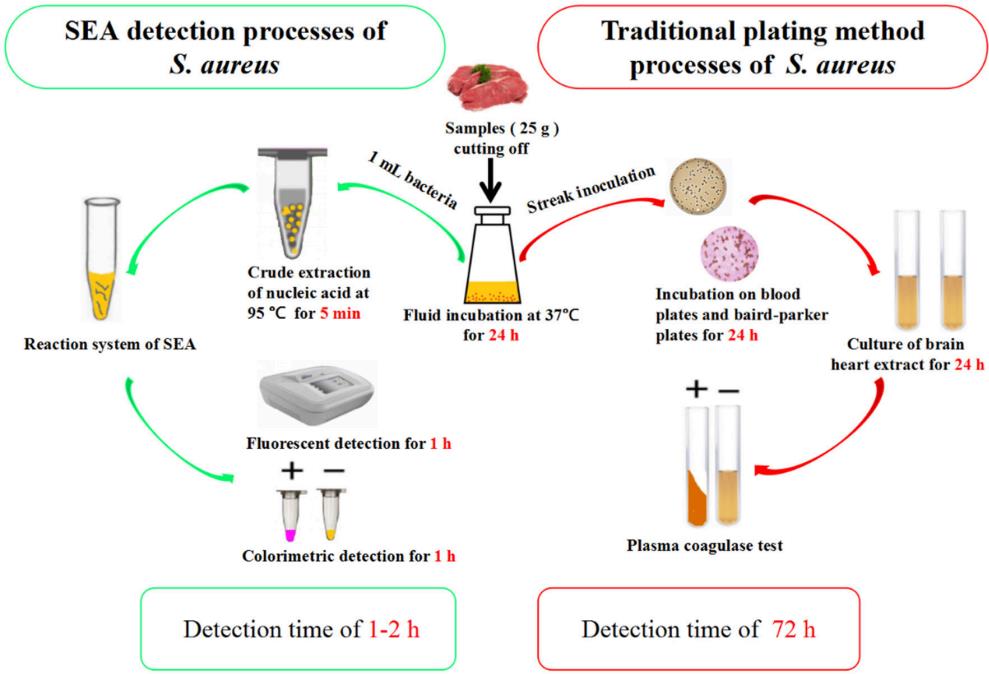Staphylococcal infections pose a major threat to public health and the early detection of staphylococcus can help prevent the spread of infection. With abundant expertise in antibody development and production, Creative Biolabs is capable of providing customized in vitro diagnostic (IVD) antibody development services targeting the staphylococcus species to help increase the specificity and sensitivity of the clinical diagnosis.
 Fig.1 The morphology of Staphylococcus.1
Fig.1 The morphology of Staphylococcus.1
Introduction of Staphylococcus
Staphylococcal infections are caused by members of the Staphylococcus genus, of which there are 32 species. Using the coagulase test, these bacteria are classified into coagulase positive (Staphylococcus aureus (S. aureus)) and coagulase negative (all the others). Coagulase-negative staphylococci are nosocomial pathogens responsible for wound infections and infections of dwelling foreign bodies and intravenous catheters. S. aureus infections are classified into the carrier state, infections of the skin, infections of the deep tissues, and infections of the bloodstream. Particularly, S. aureus has emerged as frequently encountered life-threatening pulmonary pathogens, which produces a necrotizing pyogenic pneumonia with early abscess formation.
The Laboratory Diagnosis of Staphylococcus
 Fig.2 Comparison between SEA (Strand Exchange Amplification)
Fig.2 Comparison between SEA (Strand Exchange Amplification) and traditional plating method for the detection of S. aureus.2
The laboratory diagnosis of S. aureus infections typically includes several steps: the collection of specimens, identification of the bacteria, and confirmation of diagnosis. The collection of specimens for respiratory staphylococcal infections includes biopsied tissue, lung aspirate, transtracheal aspirate, and throat/nasal/nasopharyngeal swab. Identification of the bacteria is achieved by staining with Gram stain or dyes like crystal violet and basic fuschin for microscopic examination. However, this test is not always confirmatory because strains like S. aureus may be normally present on mucous membranes. As a result, confirmation of diagnosis should be performed with more sensitive and reliable assays.
To confirm a diagnosis, the sample from the patient is placed onto a culture media, which provides sources of nutrition for the bacteria to grow. Different mediums are used for different bacterial strains. After a set period of time, when the colonies are visible to the naked eye, they are stained with Gram stain for confirmation and also undergo specific characteristic tests like the catalase test or the coagulase test for diagnosis.
Rapid Diagnostic Tests for Staphylococcus
In recent years, many rapid diagnostic tests are constantly developed for Staphylococcus detection as well as the monitoring of chronic infections. These tests include the use of DNA probes and PCR, which demonstrate high specificity and good sensitivity but are difficult to perform and are not suitable as point-of-care tests. Antibody-based detection assays (e.g., immunohistochemistry and ELISA) are also fast and convenient techniques. More importantly, they are suitable as point-of-care tests.
Correlation of Staphylococcus and Food & Water
Each year drinking water and food contaminated with bacteria results in millions of illnesses in the world, especially in developing countries. Importantly, studies have suggested that most outbreaks are caused by the ingestion of contaminated food after inadequate hygiene practices, production, storage and/or distribution with Staphylococcus aureus being the main causative agents. As part of the newly established Food Safety Modernization Act, the Food and Drug Administration (FDA) has given special attention to the need for sanitary water and food. Therefore, controlling the factors that can lead to the contamination of foods and water can minimize risks to the health of customers.
IVD antibodies are indispensable tools in the current and future diagnostic industry. The advent of modern antibody techniques has greatly facilitated the development of IVD antibodies in the in vitro diagnostic market. As a company holding advanced antibody development technologies, Creative Biolabs is well-positioned to develop high-quality IVD antibodies targeting the staphylococcus species. Besides antibody generation, Creative Biolabs also offers diagnostic immunoassay development services, including feasibility analysis, assay design, assay protocol establishment, assay optimization, and kit production.
For more detailed information, please feel free to contact us or directly send us an inquiry.
References
- From Wikimedia: By Janice Haney Carr, Public Domain, https://commons.wikimedia.org/wiki/File:Staphylococcus_aureus_VISA.jpg.
- Liu, Caiyan, et al. "Rapid and simple detection of viable foodborne pathogen Staphylococcus aureus." Frontiers in Chemistry 7 (2019): 124. Distributed under Open Access license CC BY 4.0, without modification.
For Research Use Only.

